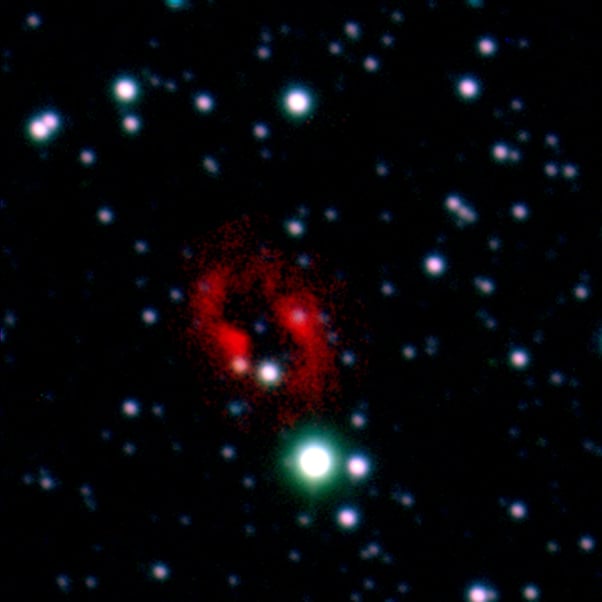[/caption]
The explosion of a binary star inside a planetary nebula has been detected, an event not witnessed for more than 100 years – and of course the astronomical equipment to observe such an event is much improved since a century ago. At the ends of their lives, before an all-encompassing supernova explosion, some stars undergo nova explosions, caused by nuclear reactions on their surface. Astronomers who detected the event predict that the combined mass of the two stars in the system may be high enough for the stars to eventually spiral into each other, triggering a much bigger double supernova explosion.
"The star which erupted was a nova, an event caused when matter is transferred from one star in a close binary system onto its companion, eventually triggering a runaway thermonuclear explosion," said Roger Wesson, lead astronomer behind the discovery at University College London in England. "In August 2007, one such exploding star was discovered in a part of the sky that had serendipitously been observed by us only a few weeks previously," he said.
Images taken prior to the explosion (above) showed that this particular star was surrounded by a planetary nebula.
The photos were taken as part of the Isaac Newton Telescope Photometric HAlpha Survey (IPHAS), which is the first digital survey of the Milky Way in visible light and is being undertaken by an international collaboration of universities.
Now, the light flash from the explosion is passing through and illuminating the surrounding nebula, the study says. [caption id="attachment_21278" align="alignnone" width="200" caption=" The nebula surrounding Nova V458 Vul, imaged before its central star erupted Three images showing the changes in the nebula as a result of the nova explosion, in August 2007, May 2008 and September 2008. Credit: UCL"]
[/caption] Although several novae are discovered each year in our galaxy, only one previous nova has been seen to occur inside a planetary nebula – Nova Persei in 1901. The opportunity to watch in detail as the nova flash interacts with the nebula is a first in astronomy, said Wesson.
"The new nova, known as V458 Vulpeculae, provides an important test for models of how stars evolve," he added. "The role of novae as potential future supernovae has thus far been difficult to analyse in detail, and so [this phenomenon] provides an opportunity to learn more about this aspect of stellar evolution."
Source:
University College of London
 Universe Today
Universe Today
